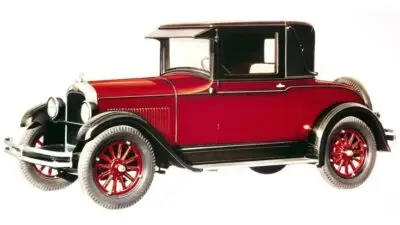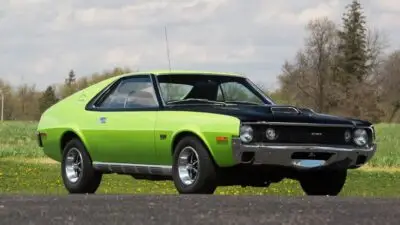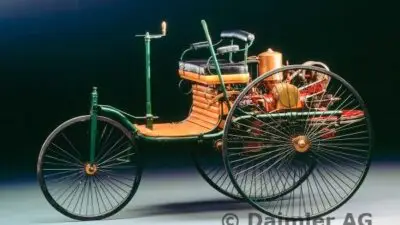Ferrari’s story is one that begins with passion for racing and transforms into a global symbol of luxury and performance. In 1929, Enzo Ferrari founded Scuderia Ferrari as a racing team, but it wasn’t until 1947 that the first official Ferrari-badged car was produced. What started as a small racing operation in Modena, Italy has evolved over seven decades into a $27 billion luxury brand that represents the pinnacle of automotive engineering and status worldwide.

The iconic prancing horse logo has become synonymous with speed, precision, and exclusivity. Ferrari’s journey from the race tracks of Europe to becoming a coveted luxury symbol reflects both Enzo Ferrari’s unwavering vision and the company’s commitment to excellence. The evolution of Ferrari showcases how racing heritage can transform into cultural significance that transcends the automotive world.
Key Takeaways
- Ferrari evolved from a racing team established in 1929 to a prestigious global luxury brand that maintains its racing DNA while commanding premium prices.
- Enzo Ferrari’s original focus on motorsport victory created the foundation for the company’s reputation for performance, craftsmanship, and exclusivity.
- The prancing horse emblem has become a cultural icon representing Italian excellence, engineering mastery, and aspirational luxury worldwide.
The Founding of Ferrari

The origins of Ferrari are deeply rooted in the passion and vision of one man who transformed racing ambitions into an automotive legend. The iconic brand’s foundation rests on racing heritage, personal determination, and a symbol that would become recognized worldwide.
Enzo Ferrari and His Origins
Enzo Ferrari was born on February 18, 1898, in Modena, Italy. His early fascination with racing began at age 10 when his father took him to watch a car race in Bologna.
Before becoming a manufacturer, Enzo was a successful race car driver for Alfa Romeo in the 1920s. His racing career taught him valuable lessons about automobile engineering and performance that would later influence his company’s philosophy.
Enzo was known for his strong personality and unwavering dedication to racing excellence. His famous quote, “I build cars to win races,” perfectly captured his competitive spirit and engineering focus.
The Creation of Scuderia Ferrari
Enzo Ferrari founded Scuderia Ferrari in 1929 as a racing team for Alfa Romeo drivers. The term “scuderia” means “stable” in Italian, reflecting the team’s purpose of housing talented racers.
Initially, Scuderia Ferrari didn’t produce cars but prepared and entered Alfa Romeo vehicles in various competitions. This arrangement continued until 1939, when Enzo officially left Alfa Romeo.
During World War II, Ferrari’s company manufactured machine tools and aircraft parts. After the war, in 1947, Enzo finally built the first official Ferrari car, the 125 S. This marked the true beginning of Ferrari as a manufacturer.
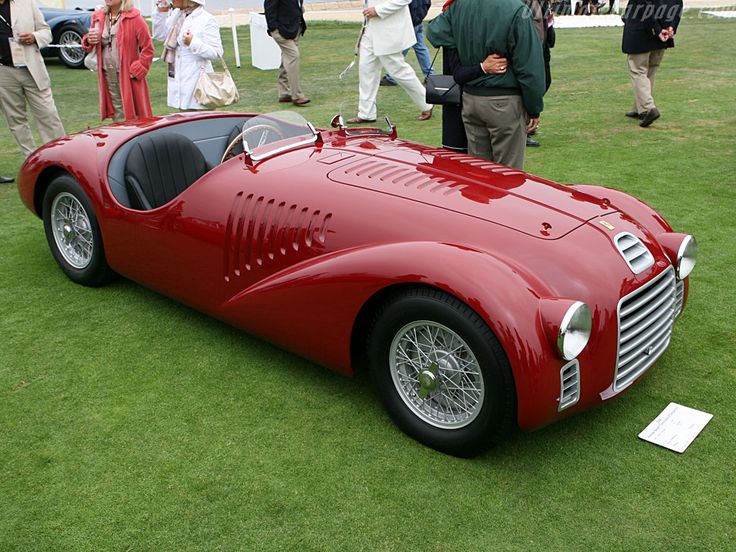
The Significance of the Prancing Horse
The famous prancing horse emblem has a remarkable story behind it. The symbol originated with Francesco Baracca, a heroic Italian fighter pilot from World War I who painted it on his aircraft.
After Baracca’s death in combat, his mother suggested to Enzo Ferrari that he use the prancing horse symbol for good luck. Enzo added a yellow background—the color of his hometown, Modena.
The Ferrari logo became one of the most recognizable brand symbols in the world. The black horse silhouetted against a yellow shield represents speed, power, and Italian heritage, perfectly capturing the essence of what would become a legendary automotive brand.
Early Racing Triumphs

Ferrari’s journey began on the racetrack, where Enzo Ferrari’s passion for speed and competition laid the groundwork for the legendary brand. The company’s early victories established its reputation for engineering excellence and racing prowess.
The 125 S and First Victory
Ferrari’s racing story began with the 125 S, the first vehicle to bear the Ferrari name. This 12-cylinder marvel made its debut in 1947 at the Piacenza Circuit. Despite an initial setback due to fuel pump issues, the car quickly proved its worth.
On May 25, 1947, the 125 S achieved its first victory at the Rome Grand Prix with Franco Cortese behind the wheel. This historic win marked the beginning of Ferrari’s racing legacy.
The 125 S featured a 1.5-liter V12 engine producing approximately 118 horsepower. During its brief racing career, the original 125 S secured six victories in 14 races – an impressive record that validated Enzo’s engineering vision.
Forging a Motorsport Legacy
Throughout the late 1940s and 1950s, Scuderia Ferrari emerged as a dominant force in motorsport. The team expanded its racing program to compete in multiple prestigious events across Europe.
Ferrari achieved its first Formula 1 World Championship victory in 1951 with driver José Froilán González at the British Grand Prix. The following year, Alberto Ascari secured Ferrari’s first Drivers’ Championship, winning six consecutive races.
The 1950s saw Ferrari dominate endurance racing as well. The team claimed multiple victories at the challenging 24 Hours of Le Mans, establishing Ferrari as masters of both speed and reliability.
These early successes cemented Ferrari’s reputation for engineering excellence and competitive spirit in motorsport circles around the world.
Forming Rivals: The Mercedes Connection
One of the most famous rivalries in motorsport history emerged between Ferrari and Mercedes-Benz during the 1950s. This competition pushed both manufacturers to new heights of innovation and performance.
The rivalry intensified when Mercedes returned to Grand Prix racing in 1954 with their technically advanced W196. The Mercedes team posed a serious challenge to Ferrari’s dominance with drivers like Juan Manuel Fangio at the wheel.
Enzo Ferrari viewed Mercedes as both a worthy opponent and a benchmark for excellence. This competition forced Ferrari to continuously improve their vehicles and racing strategies.
When Mercedes temporarily withdrew from racing after the 1955 Le Mans disaster, Ferrari capitalized on their absence. The team secured multiple championships, further solidifying their position as the premier name in motorsport.
Ferrari and Formula One Domination

Ferrari’s presence in Formula One represents one of the most successful legacies in motorsport history. Their red cars have become synonymous with racing excellence, technical innovation, and passionate competition.
Becoming a Formula One Icon
Ferrari joined Formula One at its very beginning in 1950, making it the oldest surviving team in the championship. Scuderia Ferrari quickly established itself as a force to be reckoned with in the racing world.
The team’s early years set the foundation for decades of racing excellence. In the 1950s, Ferrari secured their first championships with Alberto Ascari winning back-to-back driver titles in 1952 and 1953.
The 1960s brought challenges, but Ferrari’s commitment never wavered. By the 1970s, the team returned to prominence with Niki Lauda leading Ferrari to constructors’ championships in 1975 and 1976.
Ferrari has accumulated an impressive 16 Constructors’ Championships and 15 Drivers’ Championships throughout its Formula One journey, showcasing their engineering prowess and racing strategy.
Legendary Drivers and Teams
Ferrari’s legacy is built on partnerships with extraordinary racing talents. Michael Schumacher’s era from 1996 to 2006 stands as perhaps the most dominant period, with the German driver winning five consecutive world championships.
Other legendary drivers who created history with Ferrari include Juan Manuel Fangio, Niki Lauda, Gilles Villeneuve, and more recently, Sebastian Vettel and Charles Leclerc.
Behind these drivers stood remarkable team leadership. Jean Todt’s management during the Schumacher era revolutionized Ferrari’s approach to Formula One, creating a team culture focused on precision and excellence.
The technical leadership of figures like Mauro Forghieri and Ross Brawn helped develop cars that dominated their respective eras. Their innovations often changed Formula One’s technical landscape.
Monza and Iconic Races
The Italian Grand Prix at Monza represents Ferrari’s spiritual home race. The passionate “tifosi” (Ferrari fans) create an atmosphere unlike any other venue, with a sea of red filling the grandstands.
Ferrari’s victories at Monza are celebrated as national triumphs in Italy. The team’s wins here carry special significance, connecting present success with Ferrari’s deep racing heritage.
Beyond Monza, Ferrari has created memorable moments at tracks worldwide. Their victories at prestigious circuits like Monaco, Silverstone, and Spa-Francorchamps highlight the team’s versatility.
Ferrari’s most dramatic races often feature comeback victories, strategic masterclasses, or battles in challenging conditions. These moments have cemented Ferrari’s reputation for racing excellence and contributed to their status as a global luxury icon.
Success at Le Mans and Endurance Races

Ferrari’s endurance racing legacy is marked by extraordinary achievements and technological innovation. The Italian manufacturer has established itself as one of the top three Le Mans winners in history, with its race cars becoming iconic symbols of performance and engineering excellence.
Iconic Le Mans Victories
Ferrari’s dominance at the prestigious 24 Hours of Le Mans race began in 1949 when Luigi Chinetti drove a Ferrari 166 MM to victory. This marked the beginning of a golden era for the Italian team at Circuit de la Sarthe.
The 1950s and 1960s saw Ferrari claim an impressive nine overall victories at Le Mans, including six consecutive wins from 1960 to 1965. These achievements cemented Ferrari’s reputation as an endurance racing powerhouse.
The Ferrari 250 GTO, 275P, and 330 P3/P4 models became legendary during this period. Their performance at Le Mans demonstrated Ferrari’s exceptional engineering and reliability over the grueling 24-hour format.
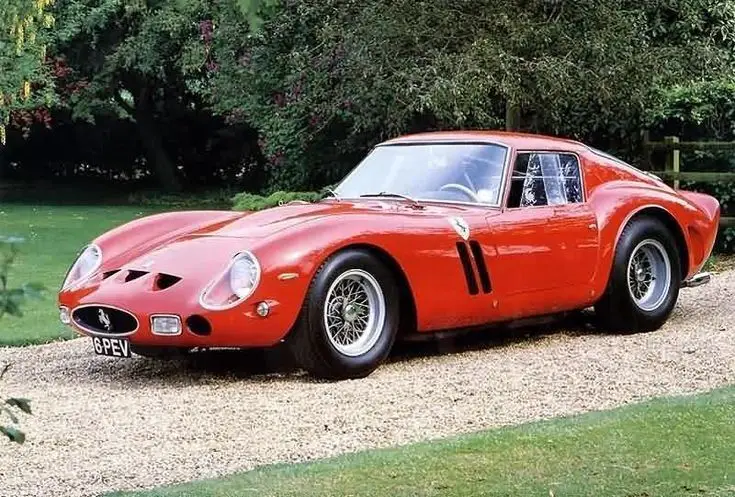
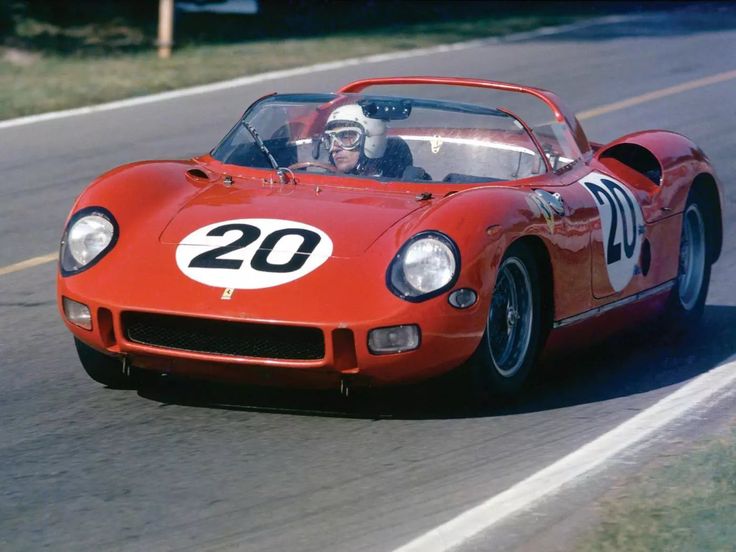

After a long hiatus, Ferrari made a triumphant return to the top class of endurance racing with the 499P hypercar, a spiritual successor to their classic racing prototypes.
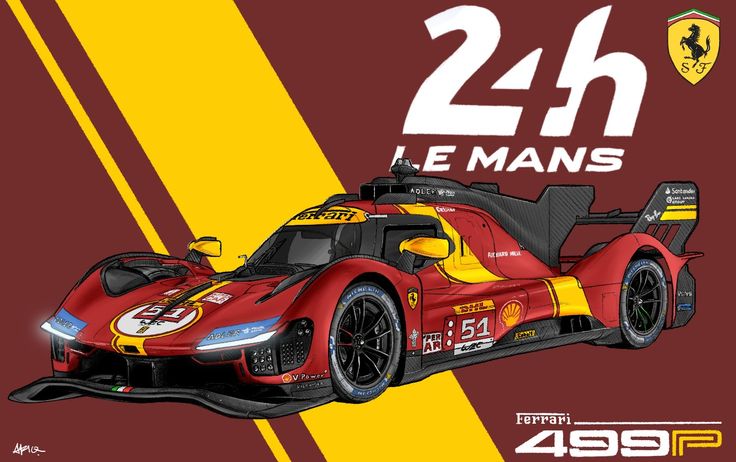
Endurance Racing Development
Ferrari’s endurance racing program has consistently served as a laboratory for technologies later implemented in their road cars. The demanding nature of 24-hour races pushed engineers to develop more reliable and efficient systems.
The transfer of racing technology to production vehicles remains a core Ferrari philosophy. Innovations in aerodynamics, braking systems, and engine efficiency all trace their origins to the endurance racing program.
Ferrari’s success in endurance racing relied heavily on driver talent. Legendary racers like Olivier Gendebien, Phil Hill, and Jochen Rindt all contributed to Ferrari’s endurance racing legacy.
The competition with rivals like Porsche and Ford in endurance events sparked some of motorsport’s greatest technological leaps. These rivalries pushed Ferrari to constantly innovate their sports prototype designs.
Sports Prototypes and Innovation
Ferrari’s sports prototypes represent some of the most innovative racing machines ever created. The 312P and 312PB models of the early 1970s featured groundbreaking aerodynamic designs and powerful flat-12 engines.
The 499P hypercar carries on this tradition of innovation with hybrid technology and advanced aerodynamics. This modern racer connects to Ferrari’s heritage while embracing cutting-edge engineering.
Ferrari’s prototype development often focused on achieving the optimal balance between power, weight, and reliability. This holistic approach to engineering became a hallmark of their endurance racing philosophy.
Key innovations from Ferrari’s endurance racing program include advanced composite materials, fuel-efficient engine designs, and sophisticated electronic systems. These technologies have influenced both racing and production vehicles worldwide.
Pioneering Performance and Speed

Ferrari’s dedication to automotive excellence has been defined by its groundbreaking engineering and relentless pursuit of speed records. The company’s racing heritage directly influenced the development of its road cars, creating vehicles that pushed the boundaries of performance.
Powerful Engines and Technological Advances
Ferrari’s reputation for power began with its early V12 engines, which became a hallmark of the brand. The 1947 125 S featured a tiny 1.5-liter V12 that produced an impressive 118 horsepower. This commitment to powerful engine development continued throughout Ferrari’s history.
The introduction of the Dino series in the late 1960s brought mid-engine configurations to Ferrari road cars, revolutionizing handling and weight distribution. This layout became standard for many future supercars.
Ferrari pioneered several technological innovations including:
- Early adoption of disc brakes for improved stopping power
- Development of semi-automatic transmissions (F1-style paddle shifters)
- Implementation of active aerodynamics
- Introduction of traction control systems specifically tuned for high-performance driving
These advances weren’t merely for show—they translated directly from racing success to road car capability.
The Pursuit of Speed and Excellence
Ferrari’s commitment to speed is evident in its continuous breaking of performance records. The 1984 GTO could reach 189 mph, while the 1987 F40 broke the 200 mph barrier with a top speed of 201 mph.

The company established a tradition of creating limited-edition hypercars that showcased the absolute limits of automotive performance. Models like the F50, Enzo, and LaFerrari each represented the pinnacle of Ferrari’s engineering capabilities at their time.
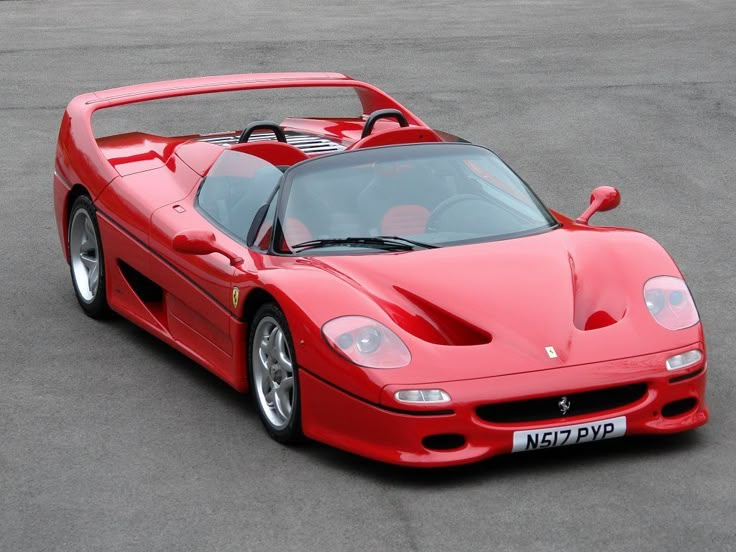
Ferrari’s racing division, Scuderia Ferrari, originally established in 1929, directly influenced development of road cars. Innovations tested on the track were refined for consumer vehicles.
The company’s focus on driver engagement sets it apart from competitors. Even as technology advanced, Ferrari maintained an emphasis on the connection between driver and machine.
The Evolution of Ferrari Models

Ferrari’s journey through automotive history is marked by groundbreaking designs and engineering feats. The Italian manufacturer has consistently pushed boundaries in both racing and road car development.
From Classic Creations to Modern Supercars
The 125 S, Ferrari’s first road car introduced in 1947, marked the beginning of a legendary lineup. Powered by a 1.5-liter V12 engine, it established Ferrari’s reputation for performance engineering.
The 1950s and 1960s saw iconic models like the 250 GT series, including the highly coveted 250 GTO. These cars combined racing capability with elegant styling, setting standards for future generations.
In the 1970s, the mid-engine 308 GTB introduced a new design direction. Its distinctive wedge shape and transverse-mounted V8 engine influenced Ferrari design for decades.
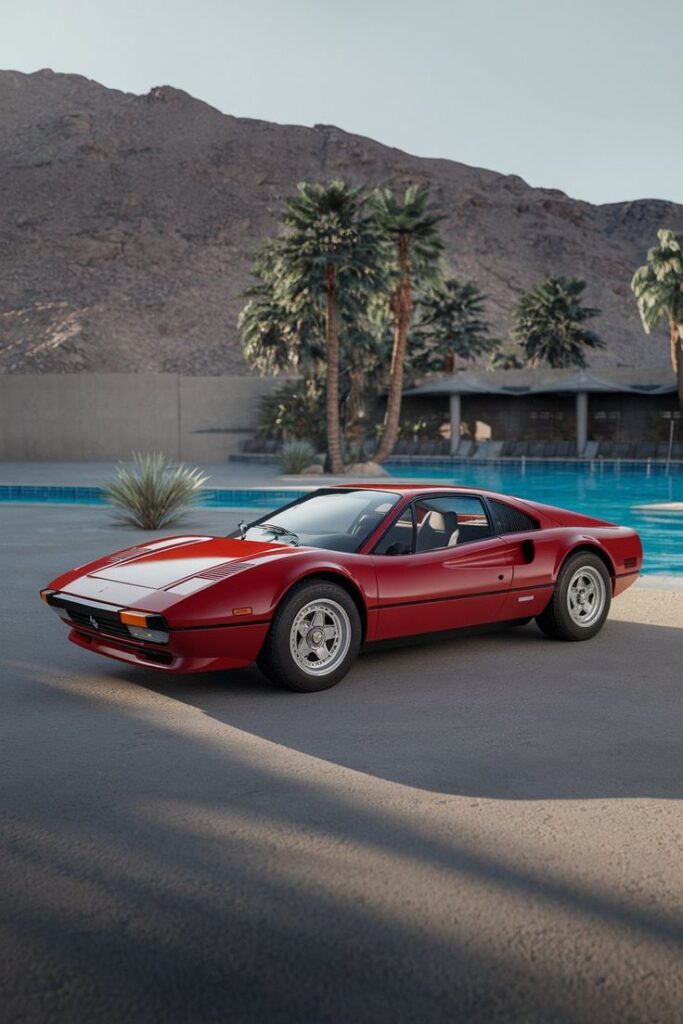
The Testarossa of the 1980s, with its side strakes and flat-12 engine, became a cultural icon that symbolized exotic performance during that era.
Modern Ferrari supercars like the 458 Italia and 488 GTB continued the tradition of combining cutting-edge technology with breathtaking performance and design.

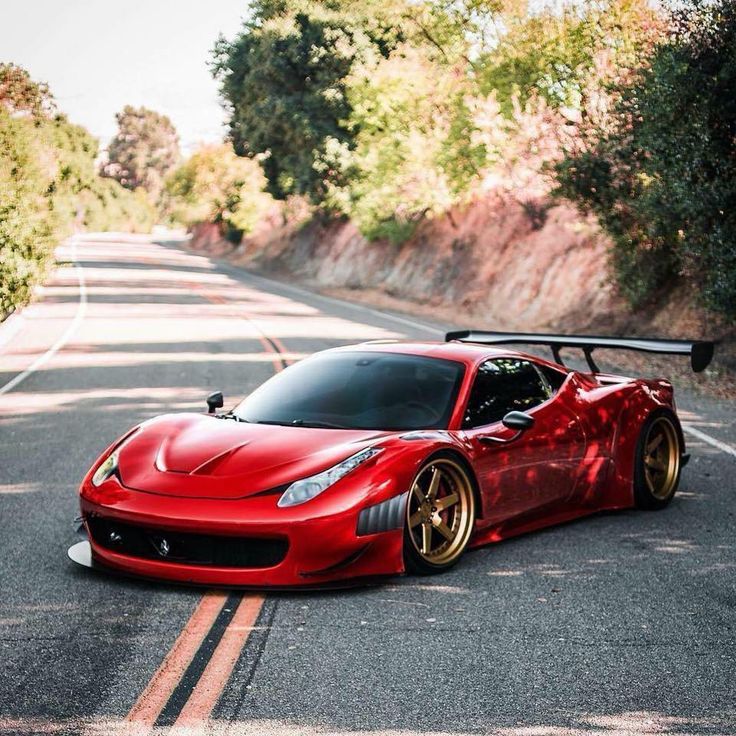
GTS and Sports Car Innovation
Ferrari’s GTS (Gran Turismo Spider) models revolutionized the convertible supercar segment. The 348 GTS of the early 1990s offered open-air thrills without compromising the coupe’s rigid structure.
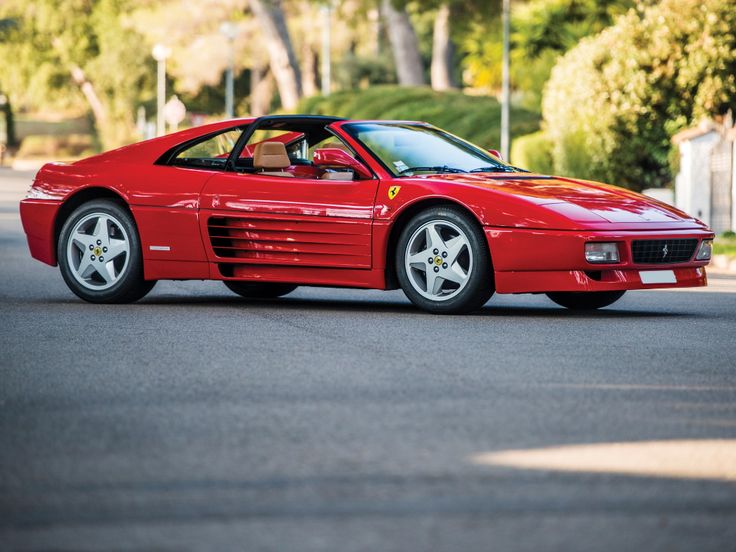
The 550 Maranello reintroduced the front-engine V12 layout in 1996, reviving a classic Ferrari configuration with modern technology. Its successor, the 575M, further refined this approach.
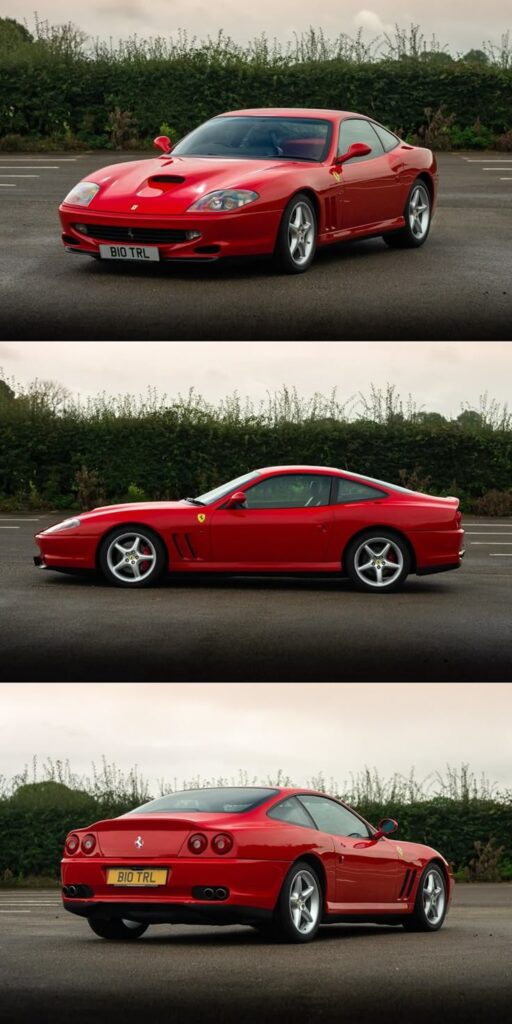
The California T, launched in 2014, marked Ferrari’s return to turbocharging. This hardtop convertible GT combined everyday usability with impressive performance credentials.
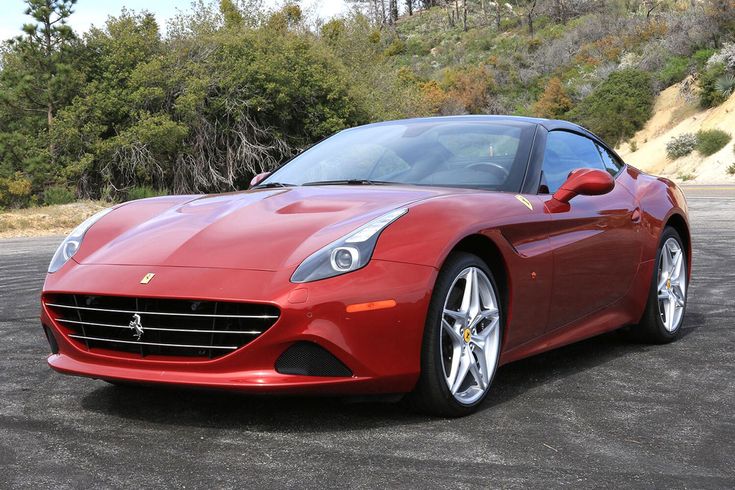
The 812 Superfast continues Ferrari’s tradition of front-engine V12 grand tourers. With 789 horsepower and advanced aerodynamics, it represents the pinnacle of Ferrari’s naturally aspirated technology.
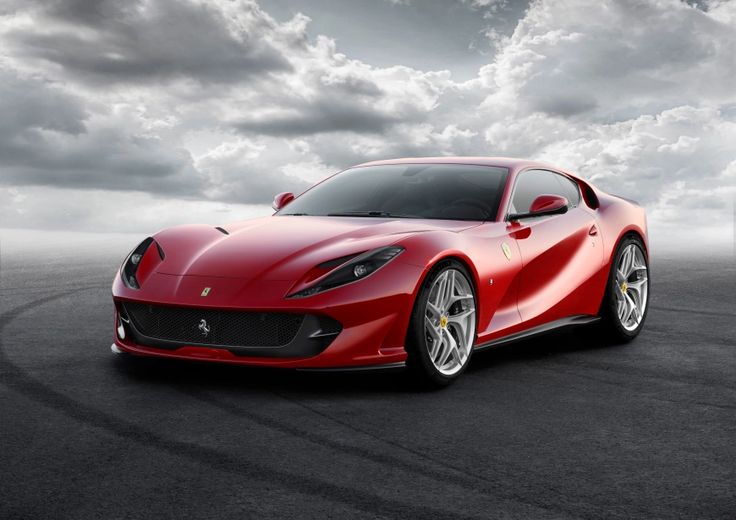
Ferrari’s Roma, introduced in 2020, embraces a more understated design language while maintaining the company’s performance standards. It signals Ferrari’s expanding vision of what a sports car can be.
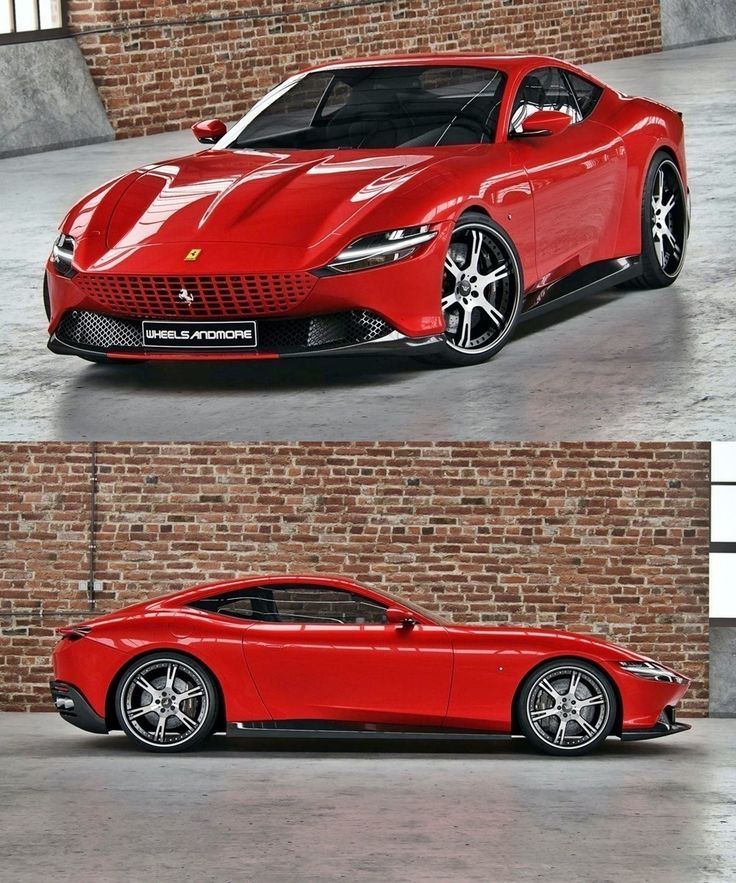
Flagship Milestones: F40, LaFerrari, SF90 Stradale
The F40, introduced in 1987, was Ferrari’s 40th anniversary celebration and the last model approved by founder Enzo Ferrari. Its twin-turbocharged V8 and lightweight carbon fiber construction made it a technological marvel of its time.
The Enzo Ferrari (2002) paid homage to the company’s founder with Formula 1-derived technology and a striking design that prioritized aerodynamic function over traditional beauty.
LaFerrari (2013) marked Ferrari’s first hybrid hypercar. Combining a V12 engine with an electric motor, it produced 950 horsepower while reducing emissions, demonstrating Ferrari’s commitment to performance and innovation.
The SF90 Stradale represents Ferrari’s most powerful production car to date. With three electric motors supporting a twin-turbocharged V8, it produces a combined 986 horsepower. This plug-in hybrid system reflects Ferrari’s evolution from racing pioneers to luxury icons.
Ferrari’s Transformation Into a Luxury Icon

Ferrari’s evolution from racing team to luxury powerhouse represents one of the most successful brand transformations in automotive history. The company masterfully leveraged its racing heritage to create exclusive vehicles that command premium prices while maintaining performance excellence.
Blending Racing Heritage With Luxury Design
Ferrari’s approach to luxury has always been distinct from other high-end automakers. The brand never abandoned its racing DNA while pursuing luxury status. Instead, Ferrari integrated racing technology into road cars, creating vehicles with both track capability and refined comfort.
The iconic Prancing Horse logo became synonymous with both speed and sophistication. Design elements like the signature Ferrari red, sculpted aerodynamic bodies, and handcrafted interiors set the cars apart.
In the 1990s and 2000s, models like the 550 Maranello and 456 GT introduced more comfort-focused features without sacrificing performance credentials. These grand tourers expanded Ferrari’s appeal beyond racing enthusiasts to luxury consumers seeking prestige and exclusivity.
Building a Global Brand
Ferrari carefully controlled its production numbers to maintain exclusivity. Unlike mass-market manufacturers, the company deliberately limits annual production to preserve value and desirability.
The brand expanded its global presence through flagship stores in luxury capitals like London, Tokyo, and Dubai. These retail spaces showcase Ferrari’s attention to detail and premium positioning.
Ferrari’s merchandising strategy reinforced its luxury status. From high-end clothing lines to accessories and experiences, the company created touchpoints for enthusiasts who couldn’t afford the cars themselves.
Strategic partnerships with luxury brands in fashion, watches, and technology strengthened Ferrari’s position in the premium segment. These collaborations helped Ferrari transcend automotive boundaries to become a lifestyle brand.
Exclusive Ownership Experience
Ferrari ownership extends far beyond purchasing a vehicle. The company created a complete ecosystem of experiences for clients, including private track days, exclusive events, and personalized factory tours.
The Ferrari Approved pre-owned program maintains quality standards and protects resale values. This careful market management ensures owners feel their investment is protected, unlike typical vehicle depreciation.
Ferrari’s customization program, Tailor Made, allows buyers to create truly bespoke vehicles. Clients can select everything from unique paint colors to custom interior materials, elevating the ownership experience.
The Ferrari Owners Club connects enthusiasts worldwide, creating a community feeling among owners. This sense of belonging to an exclusive group reinforces the brand’s prestigious position in the luxury market.
Ferrari’s Cultural Legacy and Global Influence

Ferrari transcends the automotive world, becoming a global symbol of luxury, performance, and Italian craftsmanship. The iconic prancing horse logo is recognized worldwide as a mark of excellence that few brands can match.
Ferrari in Popular Culture
Ferrari has secured its place in films, music, art, and fashion as the ultimate symbol of success and luxury. In Hollywood movies, Ferraris frequently appear as the vehicle of choice for wealthy characters or as coveted prizes. The brand’s distinctive red cars have starred in classics like “Ferris Bueller’s Day Off” and modern franchises including “Fast and Furious.”
Music artists regularly reference Ferrari in lyrics to evoke images of wealth and achievement. The distinctive engine sound of a Ferrari has become so iconic that it’s immediately recognizable to car enthusiasts worldwide.
The Ferrari brand has also crossed into fashion, with merchandise becoming an Italian symbol of luxury that fans proudly display. Ferrari stores in major cities attract tourists and enthusiasts alike.
Influence on Automotive Design
Ferrari’s design philosophy has revolutionized how performance cars look and function across the industry. The sleek, aerodynamic shapes pioneered by Ferrari have influenced countless other manufacturers who strive to capture similar aesthetic appeal.
Ferrari’s innovations in engine technology, particularly their V8 and V12 powerplants, have set standards that competitors continually benchmark against. The brand’s early adoption of paddle-shift transmissions from Formula 1 technology has now become commonplace in performance cars.
Enzo Ferrari’s vision ignited a revolution in motorsports and car manufacturing that continues today. The company’s unwavering commitment to performance without compromise forces other manufacturers to elevate their standards.
Beyond technical influence, Ferrari has defined what luxury performance means. Their cultural impact has made them an icon that represents the pinnacle of automotive achievement.
Frequently Asked Questions

Ferrari’s rich history spans from racing circuits to luxury showrooms, embodying Italian excellence and automotive innovation. These common questions explore the company’s founder, iconic logo, technical milestones, and corporate structure.
Who was Enzo Ferrari and what was his role in the automobile industry?
Enzo Ferrari was born in Modena, Italy in 1898 and became one of the most influential figures in automotive history. He began his career as a race car driver before founding Scuderia Ferrari in 1929 as a racing team.
In 1947, Enzo officially established Ferrari SpA, creating road cars that would revolutionize the sports car market. His vision centered on building vehicles with uncompromising performance and distinctive Italian design.
Enzo maintained tight control over his company until his death in 1988, insisting that racing success should drive innovation in production vehicles. His leadership philosophy prioritized competition, technical excellence, and exclusivity.
Can you outline the major milestones in Ferrari’s history as a company?
Ferrari’s official founding came in 1947 when Enzo Ferrari created Ferrari SpA, though the racing team existed earlier. The first Ferrari-badged car, the 125 S, debuted that same year with a V12 engine.
The 1950s and 1960s saw Ferrari dominate in motorsport while producing legendary road cars like the 250 GTO. In 1969, Fiat acquired a 50% stake in Ferrari, providing financial stability.
The 1980s brought the iconic F40 supercar, while the 1990s and 2000s expanded the model range with vehicles like the 360 Modena and Enzo. Ferrari’s IPO in 2015 marked its independence as a publicly traded company.
What is the significance of the prancing horse on the Ferrari logo?
The prancing horse (Cavallino Rampante) emblem has origins dating back to World War I. Enzo Ferrari adopted the symbol after meeting Count Francesco Baracca’s parents, an Italian flying ace who had painted a similar horse on his aircraft.
The black horse appears on a yellow background, representing Modena’s civic color. The logo also includes the Italian tricolor at the top, proudly displaying Ferrari’s national heritage.
This emblem has become one of the most recognizable automotive logos worldwide, symbolizing power, speed, and Italian craftsmanship.
Which model marked Ferrari’s foray into plug-in hybrid electric vehicles?
The LaFerrari, unveiled in 2013, represented Ferrari’s first major step into hybrid technology. This limited-production hypercar combined a V12 engine with an electric motor in a performance-focused HY-KERS system.
Ferrari’s true plug-in hybrid debut came with the SF90 Stradale in 2019. This revolutionary model features a twin-turbocharged V8 engine paired with three electric motors, producing a combined 986 horsepower.
The SF90 Stradale can operate in all-electric mode for short distances, marking Ferrari’s adaptation to changing automotive technologies while maintaining its performance heritage.
What is the relationship between Scuderia Ferrari and the company’s road car division?
Scuderia Ferrari began as a racing team in 1929, predating the road car business. When Enzo Ferrari founded Ferrari SpA in 1947, he established a unique relationship between racing and production vehicles.
The Formula 1 team provides technological innovations that eventually filter down to road cars. This “race on Sunday, sell on Monday” philosophy ensures that Ferrari’s production vehicles benefit from motorsport-derived technology.
Today, while operationally separate, both divisions share research and development resources. Racing remains central to Ferrari’s identity, with the Formula 1 team being the most successful in the sport’s history.
Has Ferrari ever been a part of a larger automotive group, and if so, which?
In 1969, Fiat acquired a 50% stake in Ferrari, increasing to 90% after Enzo Ferrari’s death in 1988. This partnership provided Ferrari with financial stability while maintaining its operational independence.
When Fiat merged with Chrysler to form Fiat Chrysler Automobiles (FCA) in 2014, Ferrari remained part of this larger group. However, in 2016, Ferrari was spun off from FCA, becoming an independent, publicly traded company.
Today, Ferrari operates independently, though the Agnelli family’s Exor holding company (which also controls Stellantis, formerly FCA) remains a significant shareholder in the supercar manufacturer.

